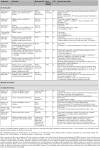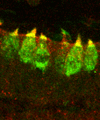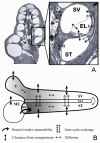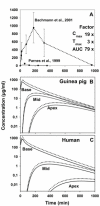Therapy of hearing disorders - conservative procedures
- PMID: 22073049
- PMCID: PMC3200997
Therapy of hearing disorders - conservative procedures
Abstract
A wide range of therapeutic strategies are available for the therapy of hearing disorders including pharmaceutical, acoustic, electrical, surgical, radiological, cognitive-behavioural and so-called "alternative" strategies. This review focuses on general conservative strategies and specific therapeutic approaches mainly for inner ear disorders, whereas surgical and device-based therapies including hearing aids and cochlear implants are described in other chapters in this volume.In addition to the systemic medication-based therapies for the treatment of hearing disorders, the rapidly growing field of local drug delivery to the inner ear as a promising therapeutic strategy is discussed on the background of unresolved issues. After description of non-drug-based therapeutic procedures, the conservative therapy of specific diseases and syndromes is reviewed.In general, there is a major discrepancy between promising animal studies up to regeneration and stem-cell transplantation, and uncontrolled experimental studies in humans on the one hand and the shortage of randomized controlled clinical trials with a high level of evidence on the other hand. Therefore, the review and comments on published clinical studies should assist the reader in making his/her own decision about the effectiveness of various, especially pharmaceutical treatments. From a critical analysis - particularly of the clinical studies presented - conclusions are drawn for the therapy of hearing disorders in the future.
Figures















References
-
- Forth W, Henschler D, Rummel W, Förstermann U, Starke K. Allgemeine und Spezielle Pharmakologie und Toxikologie. 8. Auflage ed. München, Jena: Urban & Fischer Verlag; 2001.
-
- Lamm K, Arnold W. How useful is corticosteroid treatment in cochlear disorders? Otorhinolaryngol Nova. 1999;9:203–216.
-
- Rarey KE, Luttge WG. Presence of type I and type II/IB receptors for adrenocorticosteroid hormones in the inner ear. Hear Res. 1989;41(2-3):217–221. - PubMed
-
- Rarey KE, Curtis LM, ten Cate WJ. Tissue specific levels of glucocorticoid receptor within the rat inner ear. Hear Res. 1993;64(2):205–210. - PubMed
-
- Rarey KE, Curtis LM. Receptors for glucocorticoids in the human inner ear. Otolaryngol Head Neck Surg. 1996;115(1):38–41. - PubMed
LinkOut - more resources
Full Text Sources
